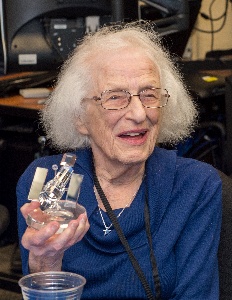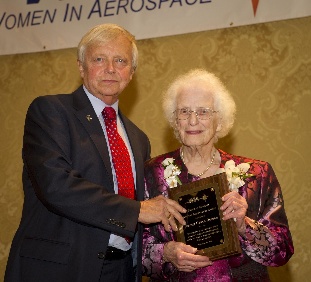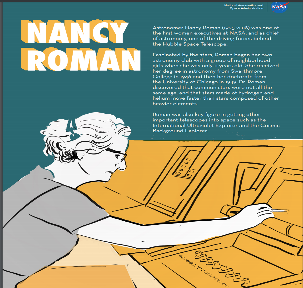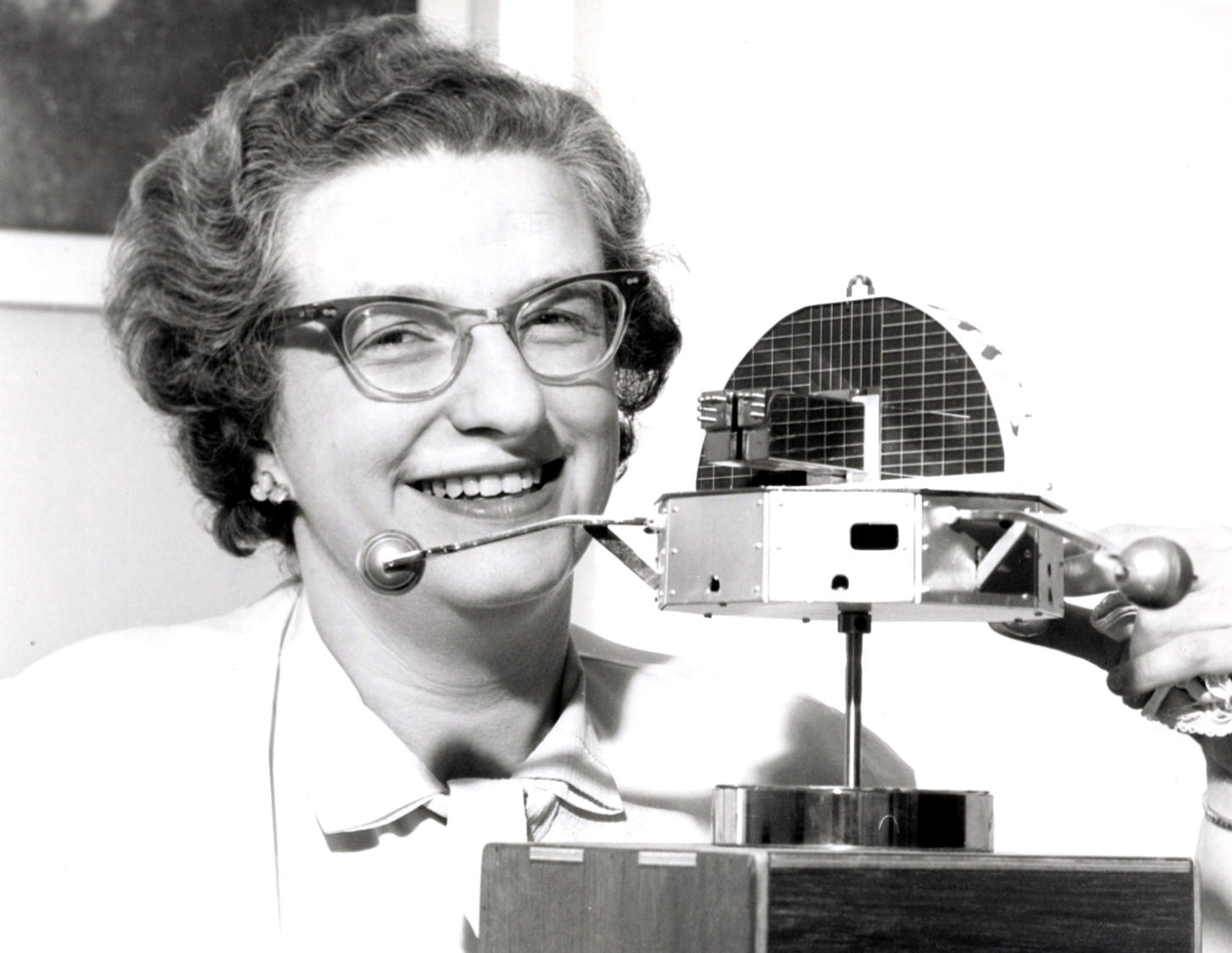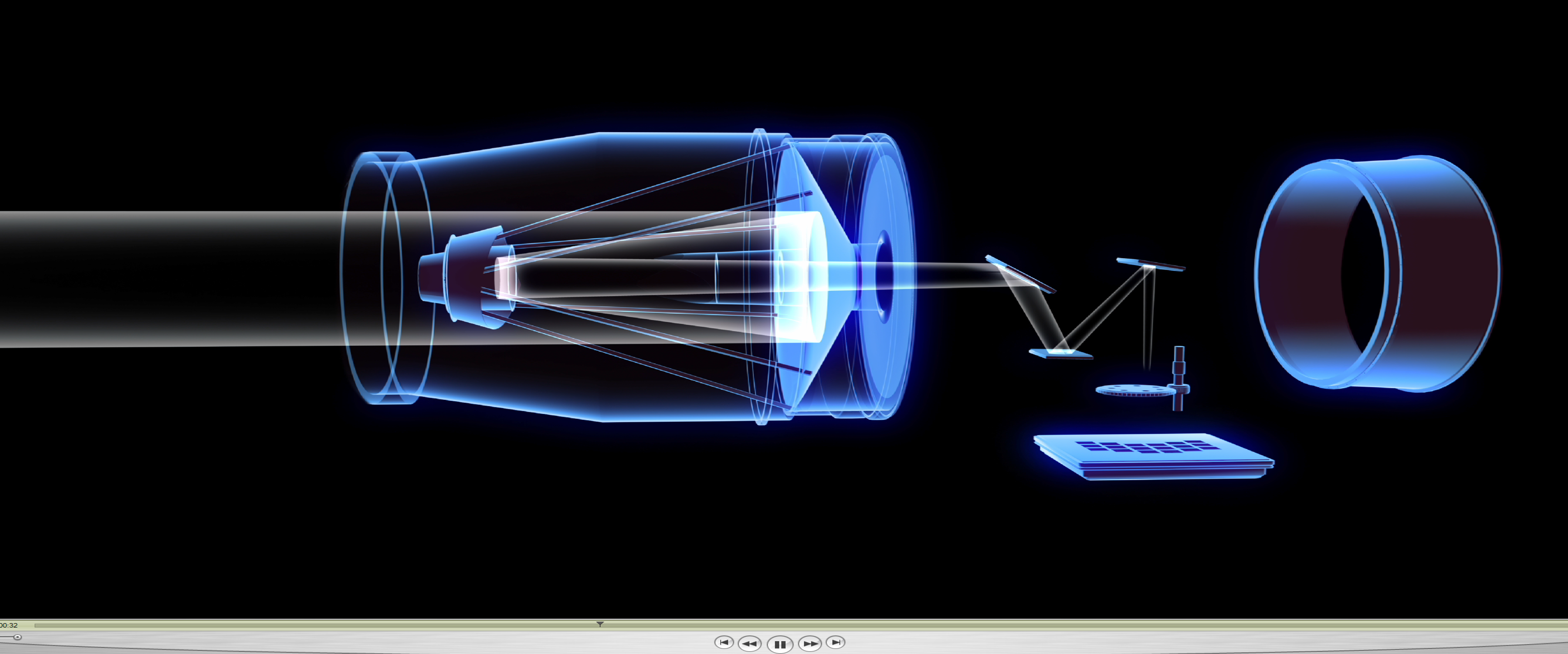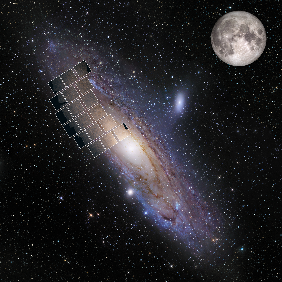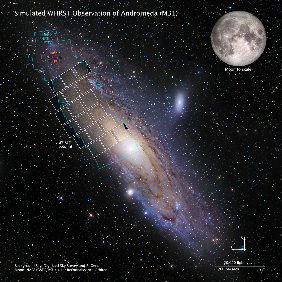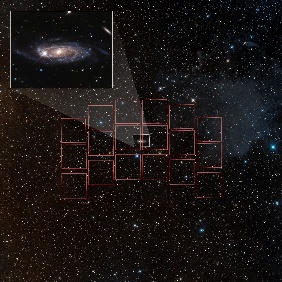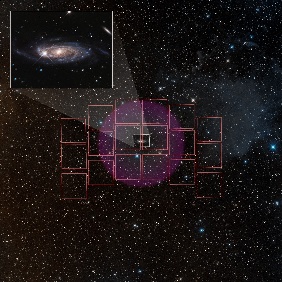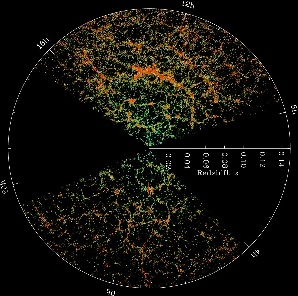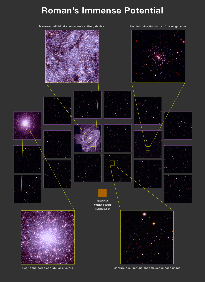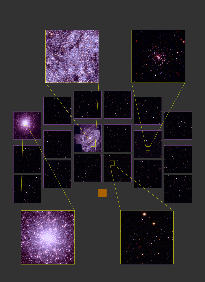| Thumbnail | Working Name | Description | Credit | File Type | File Size | File Exension | Filename | File Location | Source Location |
|---|---|---|---|---|---|---|---|---|---|
| Nancy Grace Roman, shown here at NASA's Goddard Space Flight Center in approximately 1972, was the first female executive and the first Chief of Astronomy at NASA | Credit: NASA | Image | 701.2 KB | JPG | nancy grace roman | https://stsci.box.com/s/pjwtwa4q7z199puxppt3q4niwmae6wha | https://roman.gsfc.nasa.gov/aboutNGR.html | |
| Learn about Nancy Grace Roman, her contribution to NASA missions, and how NASA has honored her. | Credit: NASA's Goddard Space Flight Center Music: "Rising Tides" from Universal Production Music | Video | 956.8 MB | MP4 | Roman_Biography_Best_1080 | https://stsci.box.com/s/i26zvhytv00tqiwu1yw1t4vsmbdn0w5w | https://svs.gsfc.nasa.gov/13608 | |
| The original prototypes of the LEGO® Ideas "Women of NASA" set displayed in front of the Apollo Lunar Module in the Boeing Milestones of Flight Hall at the Smithsonian’s National Air and Space Museum in Washington, DC, August 20, 2018. Credit: National Air and Space Museum | Source:
Rights Usage:
| Image | 2 MB | JPG | NASM2018-02043 | https://stsci.box.com/s/rrcyydzfzkgvy2v299smf185edd6gxbj | https://airandspace.si.edu/multimedia-gallery/nasm2018-02043jpg | |
| Nancy Grace Roman, standing here in front of a 1/6-scale model of the Hubble Space Telescope at NASA's Goddard Space Flight Center, is known to many as the "Mother of Hubble" for her foundational role in the observatory's planning and program structure, paving the way for missions like the Roman Space Telescope (formerly WFIRST). | Credit: NASA | Image | 1 MB | JPG | NGR_Still_1 | https://stsci.box.com/s/cwp47ll85gode0u4fakyxeriklk5xw32 | https://roman.gsfc.nasa.gov/aboutNGR.html | |
| Dr. Nancy Grace Roman visits James Webb Space Telescope (JWST) and the Hubble Project Team. | Photographer: NASA/GSFC/Bill Hrybyk | Image | 4 MB | JPG | GSFC_20170331_2017-11028_037_orig | https://stsci.box.com/s/wpbl1g90uren6f4iheg1cedv7105g1kp | https://images.nasa.gov/details-GSFC_20170331_2017-11028_037 | |
| Dr. Nancy Grace Roman visits James Webb Space Telescope (JWST) and the Hubble Project Team. | Photographer: NASA/GSFC/Bill Hrybyk | Image | 6 MB | JPG | GSFC_20170331_2017-11028_014_orig | https://stsci.box.com/s/2xg0hbfofxp3gubg345azk54st4sdvn5 | https://images.nasa.gov/details-GSFC_20170331_2017-11028_014 | |
| NASA's Associate Administrator of the Science Mission Directorate Dr. Edward J. Weiler presents the Women in Aerospace's Lifetime Achievement Award to retired NASA chief astronomer Nancy Grace Roman at the organization's annual awards ceremony and banquet held at the Ritz-Carlton Hotel in Arlington, VA on Tuesday, Oct. 26, 2010. Four current NASA leaders and one retiree were recognized for their work by Women in Aerospace. The event celebrates women's professional excellence in aerospace and honors women who have made outstanding contributions to the aerospace community. Photo Credit: (NASA/Bill Ingalls) | Photographer: (NASA/Bill Ingalls) | Image | 16.6 MB | TIF | 201010260006HQ_orig | https://stsci.box.com/s/19s43nv877zxbglxflxgkww09hyhru7y | https://images.nasa.gov/details-201010260006HQ | |
| The history of women's contributions to the fields of science, technology, engineering, and math (STEM) is long and varied. But it has also often been overlooked or underrepresented. This series highlights only a very few of the women who have made important discoveries and have had a crucial impact on STEM fields. This, however, is not just a look into the past. Today, women are in every STEM discipline, in every type of job, and represent the widest range of background and experiences. Download the free poster set to use in your space | Credit: NASA Illustration: Kristin DiVona | Image | 3.4 MB | roman_poster | https://stsci.box.com/s/qif9riups3ye1w650tg0u854dz62hcg9 | https://chandra.si.edu/women/images/roman.pdf | ||
| Nancy with a model of an Orbiting Solar Observatory. | Credit: NASA | Image | 1.2 MB | PNG | nancy-model | https://stsci.box.com/s/ewta914jgirwifgx4g4v7geynckws1rs | https://hackaday.com/2018/04/03/nancy-grace-roman-mother-of-the-hubble/ | |
| Thumbnail | Working Name | Description | Credit | File Type | File Size | File Extension | Filename | File Location | Source Location |
|---|---|---|---|---|---|---|---|---|---|
| Learn more about the Roman Space Telescope spacecraft with this short tour of the main systems. | Credit: NASA's Goddard Space Flight Center Music: “Phenomenon" from Above and Below Written and produced by Lars Leonhard | Video | 807.1 MB | MP4 | 13295_Roman_360_Best_1080 | https://stsci.box.com/s/9m81dvpe9zpfjc41zeml5hnq0o0kdh14 | https://svs.gsfc.nasa.gov/13295 | |
| Still frame of spacecraft animation | Credit: NASA's Goddard Space Flight Center | Image | 48.4 KB | JPG | TurntableRev01A_ProRes_Alpha.00001_print | https://stsci.box.com/s/e5mcy7dm5i4cp48feffpktv9fscmto0s | https://roman.gsfc.nasa.gov/gallery-spacecraftillustrations.html | |
| Still frame of spacecraft animation | Credit: NASA's Goddard Space Flight Center | Image | 191.4 KB | JPG | Roman_Space_Telescope_Still_1 | https://stsci.box.com/s/iddn4cojy0peaq68urgiv2m5xvautwiw | https://svs.gsfc.nasa.gov/13621 | |
| Still frame of spacecraft animation | Credit: NASA's Goddard Space Flight Center | Image | 172.2 KB | JPG | Roman_Space_Telescope_Still_2 | https://stsci.box.com/s/axgzqky3u55uwjv3iwaags1gvewdz332 | https://svs.gsfc.nasa.gov/13621 | |
| Still frame of spacecraft animation | Credit: NASA's Goddard Space Flight Center | Image | 178.3 KB | JPG | Roman_Space_Telescope_Still_3 | https://stsci.box.com/s/3hr4ctcz7b61j6b14g4lh43ejcfx7wvk | https://svs.gsfc.nasa.gov/13621 | |
| Still frame of spacecraft animation | Credit: NASA's Goddard Space Flight Center | Image | 507.8 KB | JPG | RST_2020_Still | https://stsci.box.com/s/l6dcfm49nydoschci88jnvmn8o5d75q8 | https://svs.gsfc.nasa.gov/13621 | |
| Still frame of spacecraft animation | Credit: NASA's Goddard Space Flight Center | Image | 755.2 KB | JPG | Roman_Space_Telescope_Animation1_Still2 | https://stsci.box.com/s/qy3f9jyhy3aqxpn1su9qx9vjon0pid1g | https://svs.gsfc.nasa.gov/13621 | |
| Stylized still frame of spacecraft animation | Credit: NASA's Goddard Space Flight Center | Image | 2 MB | JPG | Trailer_still_1 | https://stsci.box.com/s/g526b9ntswvm4iovkiqjuksswa8jtodq | https://svs.gsfc.nasa.gov/13621 | |
| Stylized still frame of spacecraft animation | Credit: NASA's Goddard Space Flight Center | Image | 1.5 MB | JPG | Roman_Still_2 | https://stsci.box.com/s/h7k7y22w2rpqr0w3q46fdqrp5atysh1f | https://svs.gsfc.nasa.gov/13621 | |
| Stylized still frame of spacecraft animation and name | Credit: NASA's Goddard Space Flight Center | Image | 1.8 MB | JPG | Roman_Title_1 | https://stsci.box.com/s/de2mwgl5vg55u3zidr73ztyr498fobum | https://svs.gsfc.nasa.gov/13621 | |
| Still frame of spacecraft animation | Credit: NASA's Goddard Space Flight Center | Image | 38.3 KB | JPG | TurntableWithBarrelRollA_4k.00738_print | https://stsci.box.com/s/ckg6p2ta4vpw1nlsuk2xlpllt5n55w21 | https://svs.gsfc.nasa.gov/13621 | |
| "Beauty pass" animation of the Roman Space Telescope spacecraft | Credit: NASA's Goddard Space Flight Center | Video | 45.4 MB | MP4 | Roman_Space_Telescope_Beauty1_1080 | https://stsci.box.com/s/5sg8hzhiya6mm8r799fpul6w36wuuh7x | https://svs.gsfc.nasa.gov/13621 | |
| "Beauty pass" animation of the Roman Space Telescope spacecraft | Credit: NASA's Goddard Space Flight Center | Video | 45.5 MB | MP4 | Roman_Space_Telescope_Beauty2_1080 | https://stsci.box.com/s/frk2ko9hk4ydq2k8uxkohxvvhk6sy8uz | https://svs.gsfc.nasa.gov/13621 | |
| Welcome to NASA's upcoming infrared survey mission, taking a wider view of the cosmos. | Credit: NASA's Goddard Space Flight Center | Video | 281.5 MB | MP4 | Roman_Space_Telescope_Trailer_Best_1080 | https://stsci.box.com/s/ai1fe4kjh29ao3gcqbi93xrku2u9b5ui | https://svs.gsfc.nasa.gov/13606 | |
| The Roman Space Telescope’s primary mirror reflects an American flag. Its surface is figured to a level hundreds of times finer than a typical household mirror. | Credits: L3Harris Technologies | Image | 9 MB | JPG | pm10 | https://stsci.box.com/s/xzo05oilxq7upj38wg1gdvitxa111y95 | https://www.nasa.gov/feature/goddard/2020/primary-mirror-for-nasas-roman-space-telescope-completed | |
| The Nancy Grace Roman Space Telescope’s primary mirror, which will collect and focus light from cosmic objects near and far, has been completed. Using this mirror, Roman will capture stunning space vistas with a field of view 100 times greater than Hubble images. | Credits: L3Harris Technologies | Image | 1.7 MB | JPG | pm2_1 | https://stsci.box.com/s/bou373c30lnu38zn7bcrshm8rie56656 | https://www.nasa.gov/feature/goddard/2020/primary-mirror-for-nasas-roman-space-telescope-completed | |
| Crane operators lower the support equipment to move the Roman Space Telescope’s primary mirror. Using this mirror, Roman will provide a new view into the universe, helping scientists solve cosmic mysteries related to dark matter, dark energy, and planets around other stars. | Credits: L3Harris Technologies | Image | 43.7 KB | JPG | pm3 | https://stsci.box.com/s/ozwncqvt4ml3idufa4rt00rjvwkikkam | https://www.nasa.gov/feature/goddard/2020/primary-mirror-for-nasas-roman-space-telescope-completed | |
| Members of the Roman Space Telescope team pose with the telescope’s primary mirror at L3 Harris Technologies in Rochester, New York. The telescope just passed a key milestone review, permitting the team to move on to finalizing the telescope design. | Credit: NASA's Goddard Space Flight Center | Image | 4 MB | PNG | WFIRSTNASAPhoto | https://stsci.box.com/s/2aj4xjo30g67or6pznpf9vrccmuevcmk | https://svs.gsfc.nasa.gov/13295 | |
| Thumbnail | Working Name | Description | Credit | File Type | File Size | File Extension | Filename | File Location | Source Location |
|---|---|---|---|---|---|---|---|---|---|
| The Nancy Grace Roman Space Telescope is a next-generation space telescope that will survey the infrared universe from beyond the orbit of the Moon. The spacecraft's giant camera, the Wide Field Instrument (WFI), will be fundamental to this exploration. The WFI features the same angular resolution as Hubble but with 100 times the field of view. Data it gathers will enable scientists to discover new and uniquely detailed information about planetary systems around other stars. The WFI will also map how matter is structured and distributed throughout the cosmos, which should ultimately allow scientists to discover the fate of the universe. Watch this video to see a simplified version of how it works. | Credit: NASA's Goddard Space Flight Center. Music" "Horizon Ahead" from Killer Tracks | Video | 269.5 MB | MP4 | 13235_WFI_Roman_Best_1080 | https://stsci.box.com/s/eb54z0uwxchl1re2zwz2nj5ogy44jcpr | https://svs.gsfc.nasa.gov/13235 | |
| 4k animation of the telescope and Wide Field Instrument, showing a simplified exploded view of how it works. | Credit: NASA's Goddard Space Flight Center/CI Lab | Video | 384.5 MB | MP4 | GSFC_20190626_WFIRST_m13235_widefield_Animation | https://stsci.box.com/s/tltx2mth63vklcet8jxj3k9fbk7n9ifu | https://svs.gsfc.nasa.gov/13235 | |
| Animated GIF of the Roman Wide Field Instrument. | Credit: NASA's Goddard Space Flight Center | Animation | 1.8 MB | GIF | WFIRST_WideFieldInstrument | https://stsci.box.com/s/itwbh12qrd21uc9ejmc6hugpv3txe8tq | https://svs.gsfc.nasa.gov/13235 | |
| Thumbnail | Working Name | Description | Credit | File Type | File Size | File Extension | Filename | File Location | Source Location |
|---|---|---|---|---|---|---|---|---|---|
| Watch this video to learn more about the Roman Space Telescope's coronagraph instrument. | Credit: NASA's Goddard Space Flight Center Music: "Concept of Motion" from Universe Production Music | Video | 96.8 MB | MP4 | 13325_Roman_CGI_1080 | https://stsci.box.com/s/yh5oh6lxu1um85pvqsz0j32iokyxfiv0 | https://svs.gsfc.nasa.gov/13325 | |
| Thumbnail | Working Name | Description | Credit | File Type | File Size | File Extension | Filename | File Location | Source Location |
|---|---|---|---|---|---|---|---|---|---|
| Thumbnail | Working Name | Description | Credit | File Type | File Size | File Extension | Filename | File Location | Source Location |
|---|---|---|---|---|---|---|---|---|---|
| Rogue planets are free-floating planets that do not orbit a star and instead travel through space. Scientists think they are outcasts from developing planetary systems and may be very numerous throught the galaxy. This illustration shows a rogue planet traveling through space. | Credit: NASA/JPL-Caltech/R. Hurt (Caltech-IPAC) | Video | 30 MB | MP4 | 13644_Rogue_Planet_1080 | https://stsci.box.com/s/m6pxbptqq1xwopul054cib53a8476k8b | https://svs.gsfc.nasa.gov/13644 | |
| Thumbnail | Working Name | Description | Credit | File Type | File Size | File Extension | Filename | File Location | Source Location |
|---|---|---|---|---|---|---|---|---|---|
| This image of the Eagle Nebula showcases the superb resolution and wide field of view of NASA’s upcoming Nancy Grace Roman Space Telescope. In the center is Hubble's view of the Pillars of Creation - superimposed on a ground-based image. Roman’s Wide Field Instrument field of view is highlighted. Roman’s images will have the resolution of Hubble while covering an area about 100 times larger in a single pointing. The wide field image for the Eagle nebula is a combination between an image taken by NSF’s 0.9-meter telescope at Kitt Peak National Observatory (Credit: T.A.Rector (NRAO/AUI/NSF and NOIRLab/NSF/AURA) and B.A.Wolpa (NOIRLab/NSF/AURA)) and an image by amateur astronomer Liam Murphy. | L. Hustak (STScI) Acknowledgement: L. Murphy, T.A.Rector (NRAO/AUI/NSF and NOAO/AURA/NSF) and B.A.Wolpa (NOAO/AURA/NSF) | Image | 9.7 MB | PNG | Eagle_Zoom_3840x2160 | https://stsci.box.com/s/vo03mnk2vky8kwm6w3sd2wnw1rxppcod | N/A Related Press Release - https://hubblesite.org/contents/news-releases/2020/news-2020-41 | |
| This image of the Eagle Nebula showcases the superb resolution and wide field of view of NASA’s upcoming Nancy Grace Roman Space Telescope. In the center is Hubble's view of the Pillars of Creation - superimposed on a ground-based image. Roman’s Wide Field Instrument field of view is highlighted. Roman’s images will have the resolution of Hubble while covering an area about 100 times larger in a single pointing. This version has labels. The wide field image for the Eagle nebula is a combination between an image taken by NSF’s 0.9-meter telescope at Kitt Peak National Observatory (Credit: T.A.Rector (NRAO/AUI/NSF and NOIRLab/NSF/AURA) and B.A.Wolpa (NOIRLab/NSF/AURA)) and an image by amateur astronomer Liam Murphy. | L. Hustak (STScI) Acknowledgement: L. Murphy, T.A.Rector (NRAO/AUI/NSF and NOAO/AURA/NSF) and B.A.Wolpa (NOAO/AURA/NSF) | Image | 9.7 MB | PNG | Eagle_Zoom_RomanHubbleLabeled_3840x2160 | https://stsci.box.com/s/ybkkkyed2qoqgsph2zsmp8k7olgz7ji0 | N/A
| |
| This video of the Eagle Nebula showcases the superb resolution and wide field of view of NASA’s upcoming Nancy Grace Roman Space Telescope. It begins with a Hubble image of the famous Pillars of Creation superimposed on a ground-based image. The view then zooms out to show the full field of view of Roman’s Wide Field Instrument. Roman’s images will have the resolution of Hubble while covering an area about 100 times larger in a single pointing. The wide field image for the Eagle nebula is a combination between an image taken by NSF’s 0.9-meter telescope at Kitt Peak National Observatory (Credit: T.A.Rector (NRAO/AUI/NSF and NOIRLab/NSF/AURA) and B.A.Wolpa (NOIRLab/NSF/AURA)) and an image by amateur astronomer Liam Murphy. | L. Hustak (STScI) Acknowledgement: L. Murphy, T.A.Rector (NRAO/AUI/NSF and NOAO/AURA/NSF) and B.A.Wolpa (NOAO/AURA/NSF) | Video | 41.7 MB | MP4 | STScI-H-v2041a-3840x2160 | https://stsci.box.com/s/0hdnebsckqiyi55segnf3wo5bov4hpbr | https://hubblesite.org/contents/media/videos/2020/41/1282-Video?news=true | |
| This video of the Eagle Nebula showcases the superb resolution and wide field of view of NASA’s upcoming Nancy Grace Roman Space Telescope. It begins with a Hubble image of the famous Pillars of Creation superimposed on a ground-based image. The view then zooms out to show the full field of view of Roman’s Wide Field Instrument. Roman’s images will have the resolution of Hubble while covering an area about 100 times larger in a single pointing. This version has labels. The wide field image for the Eagle nebula is a combination between an image taken by NSF’s 0.9-meter telescope at Kitt Peak National Observatory (Credit: T.A.Rector (NRAO/AUI/NSF and NOIRLab/NSF/AURA) and B.A.Wolpa (NOIRLab/NSF/AURA)) and an image by amateur astronomer Liam Murphy. | L. Hustak (STScI) Acknowledgement: L. Murphy, T.A.Rector (NRAO/AUI/NSF and NOAO/AURA/NSF) and B.A.Wolpa (NOAO/AURA/NSF) | Video | 42.3 MB | MP4 | STScI-H-v2041c-3840x2160 | https://stsci.box.com/s/d45dk6epga6vje40o7wzgrnmzdura80a | https://hubblesite.org/contents/media/videos/2020/41/1284-Video?news=true | |
| This simulated image of a portion of the Andromeda galaxy highlights the high resolution, large field of view, and unique footprint of NASA’s upcoming Nancy Grace Roman Space Telescope. | NASA, STScI, and B.F. Williams (University of Washington) Image composition: STScI | Image | 45.4 MB | PNG | STSCI-H-p2002a-q-7237x4453 | https://stsci.box.com/s/tu9i8tuiqnyhoizcd8x6gwubasg788km | https://hubblesite.org/contents/media/images/2020/02/4608-Image?news=true | |
| Details of a simulated image of the Andromeda galaxy highlight the high resolution of Roman imagery. Unlike a typical wide field camera, which can cover a large area of sky but cannot reveal fine details, Roman will provide both a large field of view and high resolution. The details shown here each cover about 0.0013 square degrees of sky, the equivalent to a single infrared image from Hubble’s WFC3 camera. The pixel scale is 0.11 arcseconds/pixel. | NASA, STScI, and B. F. Williams (University of Washington) Image composition: STScI | Image | 56.1 MB | PNG | STSCI-H-p2002b-q-7237x5121 | https://stsci.box.com/s/0d8yszqylp7oum3m4yvx1e885tsyh25k | https://hubblesite.org/contents/media/images/2020/02/4609-Image?news=true | |
| Details of a simulated image of the Andromeda galaxy highlight the high resolution of Roman imagery. Unlike a typical wide field camera, which can cover a large area of sky but cannot reveal fine details, Roman will provide both a large field of view and high resolution. The details shown here each cover about 0.0013 square degrees of sky, the equivalent to a single infrared image from Hubble’s WFC3 camera. The pixel scale is 0.11 arcseconds/pixel. This version has additional labels. | NASA, STScI, and B. F. Williams (University of Washington) Image composition: STScI | Image | 56.1 MB | PNG | STSCI-H-p2002c-q-7237x5121 | https://stsci.box.com/s/g7nhs7jr4g5s9pmpmbmsvf1c8af866xt | https://hubblesite.org/contents/media/images/2020/02/4610-Image?news=true | |
| A composite figure of the Andromeda galaxy (M31) highlights the extremely large field of view of NASA’s upcoming Nancy Grace Roman Space Telescope. | Background image: Digitized Sky Survey and R. Gendler
Image composition: STScI | Image | 38.3 MB | PNG | STSCI-H-p2002d-f-5400x5400 | https://stsci.box.com/s/v0dn04p7uzemp5zis8im8wmqq52npc46 | https://hubblesite.org/contents/media/images/2020/02/4611-Image?news=true | |
| A composite figure of the Andromeda galaxy (M31) highlights the extremely large field of view of NASA’s upcoming Nancy Grace Roman Space Telescope. This version has additional labels. | Background image: Digitized Sky Survey and R. Gendler
Image composition: STScI | Image | 38.4 MB | PNG | STSCI-H-p2002e-f-5400x5400 | https://stsci.box.com/s/587tn7f4cpsbvxzs1a9c1cpujmn27wru | https://hubblesite.org/contents/media/images/2020/02/4612-Image?news=true | |
| A composite figure of the Andromeda galaxy (M31) highlights the extremely large field of view of NASA’s upcoming Nancy Grace Roman Space Telescope. Inside the Roman footprint is simulated Roman data, which you can see more clearly in the three pull-outs - each one being a Hubble field-of-view. In addition to the resolved stars in Andromeda, the insets reveal: The top inset: star cluster and background galaxy Middle inset: dust cloud Bottom inset: young star cluster | Background image: Digitized Sky Survey and R. Gendler Roman simulation images: NASA, STScI, and B. F. Williams (University of Washington) Image composition: STScI | Image | 50.5 MB | TIF | andromeda_context_sim_and_pullouts | https://stsci.box.com/s/gjvtupzzyulw41a7lx5u4ckfmitfoere | N/A Related press-release: https://hubblesite.org/contents/media/images/2020/02/4612-Image?news=true | |
| NASA’s Nancy Grace Roman Space Telescope, will capture the equivalent of 100 high-resolution Hubble images in a single shot, imaging large areas of the sky 1,000 times faster than Hubble. In several months, the Roman Space Telescope could survey as much of the sky in near-infrared light—in just as much detail—as Hubble has over its entire three decades. Watch the video to learn more about the Roman Space Telescope's simulated image. | Credit: NASA's Goddard Space Flight Center Music: "Flight Impressions" from Universal Production Music | Video | 936.5 MB | MP4 | 13497_Simulated_Image_Roman_Best_1080 | https://stsci.box.com/s/ad3bo5j1m9p5ubjnkz1h5iku0n5pliyp | https://svs.gsfc.nasa.gov/13497 |
| Thumbnail | Working Name | Description | Credit | File Type | File Size | File Extension | Filename | File Location | Source Location |
|---|---|---|---|---|---|---|---|---|---|
| This image of galaxy cluster Abell 426 showcases the superb resolution and wide field of view of NASA’s upcoming Nancy Grace Roman Space Telescope. It highlights Hubble's view of the galaxy NGC 1275 superimposed on a ground-based image. Roman’s Wide Field Instrument field of view is highlighted. Roman’s images will have the resolution of Hubble while covering an area about 100 times larger in a single pointing. The wide field image for Abell 426 is composed of a combination of the Digitized Sky Survey and an image by Petri Kehusmaa. | L. Hustak (STScI) Acknowledgement: Digitized Sky Survey and P. Kehusmaa | Image | 8.3 MB | PNG | Abell246_Zoom_3840x2160 | https://stsci.box.com/s/r6deulxldsro4vvfk8uu6owem39hm78y | N/A Related Press Release - https://hubblesite.org/contents/news-releases/2020/news-2020-41 | |
| This image of galaxy cluster Abell 426 showcases the superb resolution and wide field of view of NASA’s upcoming Nancy Grace Roman Space Telescope. It highlights Hubble's view of the galaxy NGC 1275 superimposed on a ground-based image. Roman’s Wide Field Instrument field of view is highlighted. Roman’s images will have the resolution of Hubble while covering an area about 100 times larger in a single pointing. This version has labels. The wide field image for Abell 426 is composed of a combination of the Digitized Sky Survey and an image by Petri Kehusmaa. | L. Hustak (STScI) Acknowledgement: Digitized Sky Survey and P. Kehusmaa | Image | 8.3 MB | PNG | Abell246_Zoom_RomanHubbleLabeled_3840x2160 | https://stsci.box.com/s/38thedm791ragzsrbixdnbq1yczt6cq6 | N/A Related Press Release - https://hubblesite.org/contents/news-releases/2020/news-2020-41 | |
| This video of galaxy cluster Abell 426 showcases the superb resolution and wide field of view of NASA’s upcoming Nancy Grace Roman Space Telescope. It begins with a Hubble image of the galaxy NGC 1275 superimposed on a ground-based image. The view then zooms out to show the full field of view of Roman’s Wide Field Instrument. Roman’s images will have the resolution of Hubble while covering an area about 100 times larger in a single pointing. The wide field image for Abell 426 is composed of a combination of the Digitized Sky Survey and an image by Petri Kehusmaa. | L. Hustak (STScI) Acknowledgement: Digitized Sky Survey and P. Kehusmaa | Video | 22.9 MB | MP4 | STScI-H-v2041b-3840x2160 | https://stsci.box.com/s/omngflj4hxisfa39wsp858gjacgg34a0 | https://hubblesite.org/contents/media/videos/2020/41/1283-Video?news=true | |
| This video of galaxy cluster Abell 426 showcases the superb resolution and wide field of view of NASA’s upcoming Nancy Grace Roman Space Telescope. It begins with a Hubble image of the galaxy NGC 1275 superimposed on a ground-based image. The view then zooms out to show the full field of view of Roman’s Wide Field Instrument. Roman’s images will have the resolution of Hubble while covering an area about 100 times larger in a single pointing. This version has labels. The wide field image for Abell 426 is composed of a combination of the Digitized Sky Survey and an image by Petri Kehusmaa. | L. Hustak (STScI) Acknowledgement: Digitized Sky Survey and P. Kehusmaa | Video | 23.8 MB | MP4 | STScI-H-v2041d-3840x2160 | https://stsci.box.com/s/v0dmg4druro82sk89tfnqtbsu58tvfks | https://hubblesite.org/contents/media/videos/2020/41/1285-Video?news=true | |
| This image showcases UGC 2885 (Rubin's Galaxy), with Hubble's view in inset and the Roman field of view. Roman will be able to capture the entire halo of galaxies like Rubin in a single pointing, which is about 100 times larger than a Hubble pointing. | Hubble's View of Rubin's Galaxy: NASA, ESA, and B. Holwerda (University of Louisville) Background Image: DSS Image Composition: STScI | Image | 46.5 MB | TIF | rubins_pullout | https://stsci.box.com/s/dq5r4xkqoahwsh8st12405alxna1iztq | N/A Hubble's Rubin Galaxy press release - https://hubblesite.org/contents/news-releases/2020/news-2020-1 | |
| This image showcases UGC 2885 (Rubin's Galaxy), with Hubble's view in inset and the Roman field of view. Roman will be able to capture the entire halo of galaxies like Rubin in a single pointing, which is about 100 times larger than a Hubble pointing. In this version, an estimate of the extent of the halo of Rubin's Galaxy is shown. | Hubble's View of Rubin's Galaxy: NASA, ESA, and B. Holwerda (University of Louisville) Background Image: DSS Image composition: STScI | Image | 46.5 MB | TIF | rubins_pullout_withHalo | https://stsci.box.com/s/05rcljanmdjnw504os94t4fw31v8tmns | N/A Hubble's Rubin Galaxy press release - https://hubblesite.org/contents/news-releases/2020/news-2020-1 | |
| The footprint of the Nancy Grace Roman Space Telescope's Wide Field Instrument on top of the Hubble Legacy Survey. Hubble Legacy Survey: This Hubble Space Telescope image represents the largest, most comprehensive "history book" of galaxies in the universe. The image, a combination of nearly 7,500 separate Hubble exposures, represents 16 years' worth of observations. The ambitious endeavor, called the Hubble Legacy Field, includes several Hubble deep-field surveys, including the eXtreme Deep Field (XDF), the deepest view of the universe. The wavelength range stretches from ultraviolet to near-infrared light, capturing all the features of galaxy assembly over time. The image mosaic presents a wide portrait of the distant universe and contains roughly 265,000 galaxies. They stretch back through 13.3 billion years of time to just 500 million years after the universe's birth in the big bang. The tiny, faint, most distant galaxies in the image are similar to the seedling villages from which today's great galaxy star-cities grew. The faintest and farthest galaxies are just one ten-billionth the brightness of what the human eye can see. The wider view contains about 30 times as many galaxies as in the Hubble Ultra Deep Field, taken in 2004. The new portrait, a mosaic of multiple snapshots, covers almost the width of the full Moon. Lying in this region is the XDF, which penetrated deeper into space than this legacy field view. However, the XDF field covers less than one-tenth of the full Moon's diameter. | Hubble Legacy Field: Background Image: DSS Image Composition: STScI | Image | 2.9 MB | PNG | HLF-Roman_1920x1080 | https://stsci.box.com/s/t41rs4u61b2rdjvq4iunkkstt87lfblh | N/A Related Hubble Legacy Field Press Release - https://hubblesite.org/contents/news-releases/2019/news-2019-17.html?itemsPerPage=100 | |
| The footprint of the Nancy Grace Roman Space Telescope's Wide Field Instrument on top of the Hubble Legacy Survey. Pullout- of the Hubble Ultra Deep Field is shown. Hubble Legacy Survey: This Hubble Space Telescope image represents the largest, most comprehensive "history book" of galaxies in the universe. The image, a combination of nearly 7,500 separate Hubble exposures, represents 16 years' worth of observations. The ambitious endeavor, called the Hubble Legacy Field, includes several Hubble deep-field surveys, including the eXtreme Deep Field (XDF), the deepest view of the universe. The wavelength range stretches from ultraviolet to near-infrared light, capturing all the features of galaxy assembly over time. The image mosaic presents a wide portrait of the distant universe and contains roughly 265,000 galaxies. They stretch back through 13.3 billion years of time to just 500 million years after the universe's birth in the big bang. The tiny, faint, most distant galaxies in the image are similar to the seedling villages from which today's great galaxy star-cities grew. The faintest and farthest galaxies are just one ten-billionth the brightness of what the human eye can see. The wider view contains about 30 times as many galaxies as in the Hubble Ultra Deep Field, taken in 2004. The new portrait, a mosaic of multiple snapshots, covers almost the width of the full Moon. Lying in this region is the XDF, which penetrated deeper into space than this legacy field view. However, the XDF field covers less than one-tenth of the full Moon's diameter. | Hubble Legacy Field: Hubble Ultra Deep Field (2004): NASA, ESA, S. Beckwith (STScI) and the HUDF Team. Background Image: DSS Image Composition: STScI | Image | 2.9 MB | PNG | HLF-Roman_1920x1080_pullout | https://stsci.box.com/s/nuhffgt5nzv4xej447a2efaiu7ufpv5w | N/A Related Hubble Legacy Field Press Release - https://hubblesite.org/contents/news-releases/2019/news-2019-17.html?itemsPerPage=100 Related Hubble Ultra Deep Field (2004) Press Release - https://hubblesite.org/contents/news-releases/2004/news-2004-07.html | |
| Thumbnail | Working Name | Description | Credit | File Type | File Size | File Extension | Filename | File Location | Source Location |
|---|---|---|---|---|---|---|---|---|---|
| (2011) Astronomers have pushed NASA's Hubble Space Telescope to its limits by finding what they believe is the most distant object ever seen in the universe. Its light traveled 13.2 billion years to reach Hubble, roughly 150 million years longer than the previous record holder. The age of the universe is 13.7 billion years. Updated version in progress by STScI. | Illustration: NASA, ESA, and A. Feild (STScI); Science: NASA, ESA, G. Illingworth (University of California, Santa Cruz), R. Bouwens (University of California, Santa Cruz, and Leiden University), and the HUDF09 Team | Image | 3.4 MB | JPG | Early-Universe | https://stsci.box.com/s/ah83zdbpqtv46ci932imgv209yfh1rr7 | https://hubblesite.org/contents/media/images/2011/05/2815-Image.html?news=true | |
| The SDSS map of the Universe. Each dot is a galaxy; the color bar shows the local density. Updated version using simulated Roman data in progress by STScI. | Credit: SDSS | Image | 173.1 KB | JPG | orangepie | https://stsci.box.com/s/6xfec4uos1147czkkz3epuydta4p647y | https://www.sdss.org/science/ | |
| Thumbnail | Working Name | Description | Credit | File Type | File Size | File Extension | Filename | File Location | Source Location |
|---|---|---|---|---|---|---|---|---|---|
| This infographic showcases the difference in data volume between the Nancy Grace Roman, Webb and Hubble space telescopes. Each day, Roman will send over 500 times more data back to Earth than Hubble. | Credit: NASA's Goddard Space Flight Center | Image | 38.9 MB | PNG | Roman_Data_Scale_Final | https://stsci.box.com/s/iqmluwt2j2dyeexzpv8vyfdo4kkristp | https://svs.gsfc.nasa.gov/13667 | |
| This infographic showcases the difference in data volume between the Nancy Grace Roman and Hubble space telescopes. Each day, Roman will send over 500 times more data back to Earth than Hubble. | Credit: NASA's Goddard Space Flight Center | Image | 39.3 MB | PNG | Roman_Data_Scale_HubbleOnly_Final | https://stsci.box.com/s/okmw15dblwmq4ajnmkfnivxdwb4e4p6s | https://svs.gsfc.nasa.gov/13667 | |
| This simulated image illustrates the wide range of science enabled by Roman's extremely wide field of view and exquisite resolution. The purple squares, which all contain background imagery simulated using data from Hubble’s Cosmic Assembly Near-infrared Deep Extragalactic Survey (CANDELS) program, outline the area Roman can capture in a single observation. An orange square shows the field of view of Hubble’s Wide Field Camera 3 for comparison. While the CANDELS program took Hubble nearly 21 days to survey in near-infrared light, Roman’s large field of view and higher efficiency would allow it to survey the same area in less than half an hour. Top left: This view illustrates a region of the large nearby spiral galaxy M83. Top right: A hypothetical distant dwarf galaxy appears in this magnified view, demonstrating Roman’s ability to detect small, faint galaxies at large distances. Bottom left: This magnified view illustrates how Roman will be able to resolve bright stars even in the dense cores of globular star clusters. Bottom right: A zoom of the CANDELS-based background shows the density of high-redshift galaxies Roman will detect. | Credit: Benjamin Williams, David Weinberg, Anil Seth, Eric Bell, Dave Sand, Dominic Benford, and the WINGS Science Investigation Team Image Composition: STScI | Image | 8.5 MB | JPG | Roman - Simulated View | https://stsci.box.com/s/bceee8zopmvsq169n5tkndutfwnaezlu | ||
| This simulated image illustrates the wide range of science enabled by Roman's extremely wide field of view and exquisite resolution. The purple squares, which all contain background imagery simulated using data from Hubble’s Cosmic Assembly Near-infrared Deep Extragalactic Survey (CANDELS) program, outline the area Roman can capture in a single observation. An orange square shows the field of view of Hubble’s Wide Field Camera 3 for comparison. While the CANDELS program took Hubble nearly 21 days to survey in near-infrared light, Roman’s large field of view and higher efficiency would allow it to survey the same area in less than half an hour. Top left: This view illustrates a region of the large nearby spiral galaxy M83. Top right: A hypothetical distant dwarf galaxy appears in this magnified view, demonstrating Roman’s ability to detect small, faint galaxies at large distances. Bottom left: This magnified view illustrates how Roman will be able to resolve bright stars even in the dense cores of globular star clusters. Bottom right: A zoom of the CANDELS-based background shows the density of high-redshift galaxies Roman will detect. | Credit: Benjamin Williams, David Weinberg, Anil Seth, Eric Bell, Dave Sand, Dominic Benford, and the WINGS Science Investigation Team | Image | PNG | Greatfield_Simulated_Roman_Landscape_Text | https://stsci.box.com/s/9fgfz4uyjmpa1io3yzow2w9kn2icigxg | https://svs.gsfc.nasa.gov/13667 | ||
| This simulated image illustrates the wide range of science enabled by Roman's extremely wide field of view and exquisite resolution. The purple squares, which all contain background imagery simulated using data from Hubble’s Cosmic Assembly Near-infrared Deep Extragalactic Survey (CANDELS) program, outline the area Roman can capture in a single observation. An orange square shows the field of view of Hubble’s Wide Field Camera 3 for comparison. While the CANDELS program took Hubble nearly 21 days to survey in near-infrared light, Roman’s large field of view and higher efficiency would allow it to survey the same area in less than half an hour. Top left: This view illustrates a region of the large nearby spiral galaxy M83. Top right: A hypothetical distant dwarf galaxy appears in this magnified view, demonstrating Roman’s ability to detect small, faint galaxies at large distances. Bottom left: This magnified view illustrates how Roman will be able to resolve bright stars even in the dense cores of globular star clusters. Bottom right: A zoom of the CANDELS-based background shows the density of high-redshift galaxies Roman will detect. | Credit: Benjamin Williams, David Weinberg, Anil Seth, Eric Bell, Dave Sand, Dominic Benford, and the WINGS Science Investigation Team | Image | PNG | Greatfield_Simulated_Roman_Portrait_Text | https://stsci.box.com/s/4wrzhvltn01mcpu2w238tddsvsx8fsmc | https://svs.gsfc.nasa.gov/13667 | ||
| This simulated image illustrates the wide range of science enabled by Roman's extremely wide field of view and exquisite resolution. The purple squares, which all contain background imagery simulated using data from Hubble’s Cosmic Assembly Near-infrared Deep Extragalactic Survey (CANDELS) program, outline the area Roman can capture in a single observation. An orange square shows the field of view of Hubble’s Wide Field Camera 3 for comparison. While the CANDELS program took Hubble nearly 21 days to survey in near-infrared light, Roman’s large field of view and higher efficiency would allow it to survey the same area in less than half an hour. Top left: This view illustrates a region of the large nearby spiral galaxy M83. Top right: A hypothetical distant dwarf galaxy appears in this magnified view, demonstrating Roman’s ability to detect small, faint galaxies at large distances. Bottom left: This magnified view illustrates how Roman will be able to resolve bright stars even in the dense cores of globular star clusters. Bottom right: A zoom of the CANDELS-based background shows the density of high-redshift galaxies Roman will detect. | Credit: Benjamin Williams, David Weinberg, Anil Seth, Eric Bell, Dave Sand, Dominic Benford, and the WINGS Science Investigation Team | Image | PNG | Greatfield_Simulated_Roman_Landscape_NoText | https://stsci.box.com/s/lnp2rumbiadldy6a6wrcj392qvbmhzvw | https://svs.gsfc.nasa.gov/13667 | ||
| This simulated image illustrates the wide range of science enabled by Roman's extremely wide field of view and exquisite resolution. The purple squares, which all contain background imagery simulated using data from Hubble’s Cosmic Assembly Near-infrared Deep Extragalactic Survey (CANDELS) program, outline the area Roman can capture in a single observation. An orange square shows the field of view of Hubble’s Wide Field Camera 3 for comparison. While the CANDELS program took Hubble nearly 21 days to survey in near-infrared light, Roman’s large field of view and higher efficiency would allow it to survey the same area in less than half an hour. Top left: This view illustrates a region of the large nearby spiral galaxy M83. Top right: A hypothetical distant dwarf galaxy appears in this magnified view, demonstrating Roman’s ability to detect small, faint galaxies at large distances. Bottom left: This magnified view illustrates how Roman will be able to resolve bright stars even in the dense cores of globular star clusters. Bottom right: A zoom of the CANDELS-based background shows the density of high-redshift galaxies Roman will detect. | Credit: Benjamin Williams, David Weinberg, Anil Seth, Eric Bell, Dave Sand, Dominic Benford, and the WINGS Science Investigation Team | Image | PNG | Greatfield_Simulated_Roman_Portrait_NoText | https://stsci.box.com/s/61cwd1r28a686qh1uze2v15ws3azc5rq | https://svs.gsfc.nasa.gov/13667 | ||
| Thumbnail | Working Name | Description | Credit | File Type | File Size | File Extension | Filename | File Location | Source Location |
|---|---|---|---|---|---|---|---|---|---|
 | Comparison of Hubble, Webb, and Roman, including their unique strengths and synergies. | Credit: A. James (STScI) | Image | 32.4 MB | PNG | Roman-Hubble-Webb_comparison | https://hubblesite.org/hubble-30th-anniversary/resources | ||
| Comparison of observatories in the 2020s and their windows into the electromagnetic spectrum. | Credit: A. James (STScI) | Image | 1.3 MB | JPG | many_observatories_wavelength_graph | https://stsci.box.com/s/1nbv554hcym2yjth9a5etnm9ebfzwqnq | ||
| NASA Astrophysics Fleet Mission Chart | Credit: NASA | image | 3.5 MB | Astro Fleet2019-Feb21_TAGGED | https://stsci.box.com/s/ferl1fvl5q9j3nypo5t1lw17vcj4hm3g | https://smd-prod.s3.amazonaws.com/science-pink/s3fs-public/atoms/files/Astro%20Fleet2019-Feb21_TAGGED.pdf | ||
| Comparison of Hubble and expected Rubin Observatory LSST data resolution. (L) BVz color image from the Hubble CANDELS field with θ = 0.1” and r ≈ 28.5. Roman will have comparable resolution. (R) Simulated Rubin LSST image made by degrading Hubble data to Rubin resolution of θ = 0.6”. In the Rubin image, the galaxy is blended with surrounding objects. Correlating overlapping Rubin and Roman imagery would make it possible to develop machine learning algorithms to deblend Rubin imagery that does not overlap with Roman. Clean version. | Image from B.E. Robertson, et al. 2019, Nat Rev Phys, 1, 450 | image | 2 MB | PNG | Roman_Deblending_clean | |||
| Comparison of Hubble and expected Rubin Observatory LSST data resolution. (L) BVz color image from the Hubble CANDELS field with θ = 0.1” and r ≈ 28.5. Roman will have comparable resolution. (R) Simulated Rubin LSST image made by degrading Hubble data to Rubin resolution of θ = 0.6”. In the Rubin image, the galaxy is blended with surrounding objects. Correlating overlapping Rubin and Roman imagery would make it possible to develop machine learning algorithms to deblend Rubin imagery that does not overlap with Roman. Annotated version. | Image from B.E. Robertson, et al. 2019, Nat Rev Phys, 1, 450 | image | 2 MB | PNG | Roman_Deblending_annotated | https://ui.adsabs.harvard.edu/abs/2019NatRP...1..450R/abstract |





